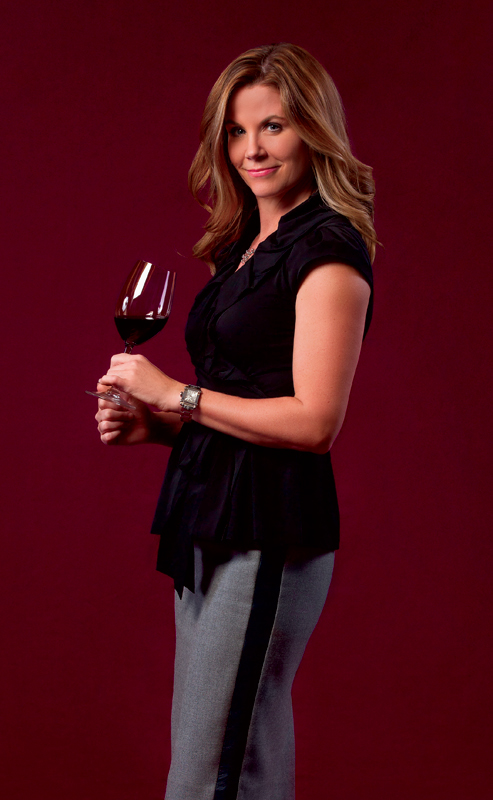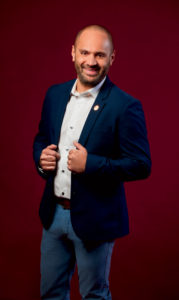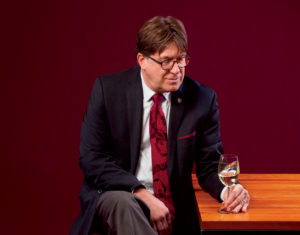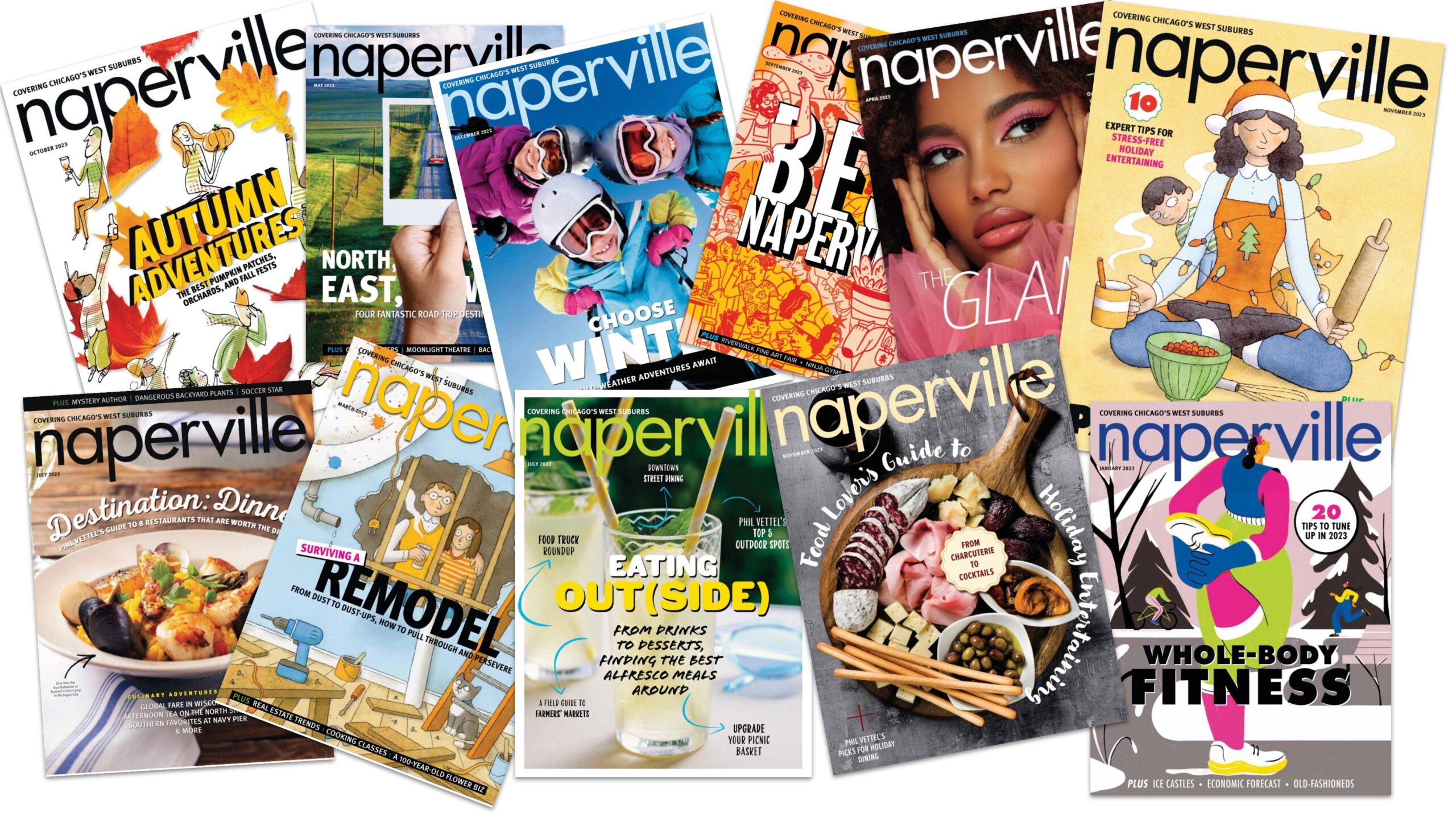Vintage Expertise
By Michelle Dellinger
February 2018 View more Featured

The word sommelier has French origins (like all things tres chic), and generally refers to a person serving the traditional role of wine steward. But today’s wine experts should add “teacher” to their resume, as education is as much a part of their job as anything else.
We invited three sommeliers who influence suburban wine lists to share nuggets of their knowledge, crafted in large part through four levels of certification by the Court of Master Sommeliers: Introductory, Certified, Advanced and Master.
“Sommelier is a very loose title,” says Serafin Alvarado, one of only eight master sommeliers in Illinois. “What the organization certifies is the master level, but just in the last few years we added the certified sommelier level so there would be a credential process for others who couldn’t complete all four.”
This second level of certification requires completion of the introductory course and test, as well as passing an exam that includes sections on service, tasting and theory. Service is tested in a mock restaurant setting, where a student must recommend cocktails and wine pairings, plus pour wine and handle a tray. Blind tasting includes identification of vintage, region and grape variety for four wines (two red and two white). Most agree that the theory part of the exam is the hardest. (Think ACT, with math and language arts replaced with wine history, geography and obscure cocktail ingredients.)
Perry’s Steakhouse sommelier Susi Zivanovic took the certified exam in 2006—just after the new test was created—and she didn’t know about the service portion until she was assigned a time to complete the exam.
“The opening question was about an Americano cocktail. Then I had to open a bottle of Champagne and serve it to eight people, pouring a continuous stream into eight flutes and serve, while answering multiple questions about notable vintages and producers to pair with specific dishes.”
The exam rattles the calmest of nerves, but Zivanovic was one of a few people in her class who passed certification—the pass rate at the time was just 40 percent. “Not a lot of people pass it on the first try,” explains Alvarado. “We’ve seen a lot of accidents happen. Champagne glasses have fallen many times.”
Few who survive this certification process have the drive to move forward. Alvarado says the third level is a game-changer—it requires an application and letter of recommendation to be put on a waiting list for three advanced courses, which can take two to three years. The advanced sommelier exam is much more challenging, and the information is much more in-depth. The tasting portion includes six blind tastes (three white and three red), and the service portion expands to include service to three tables. The passing rate is just 25 percent.
“It’s a very tough exam,” admits Alvarado. “Everyone who passes is already among the elite sommeliers in this country—the test is grueling. They are among the best of the best; they have nothing more to prove.”
Alvarado’s voice gets more serious as we discuss the next step, the master exam, which he passed in 2005: “The master level is for people who want to torture themselves. It’s a challenge between you and yourself.”
 His personal journey truly reflects his devotion to—and obsession with—wine, which started when he was a student in his homeland of Puerto Rico. Although he was passionate about music, Alvarado followed his parents’ advice to study chemistry in college, but he was miserable in his classes—until he learned about wine.
His personal journey truly reflects his devotion to—and obsession with—wine, which started when he was a student in his homeland of Puerto Rico. Although he was passionate about music, Alvarado followed his parents’ advice to study chemistry in college, but he was miserable in his classes—until he learned about wine.
He was working part-time at a hotel for a manager who was passionate about beverage service. “And then everything clicked. It was amazing how it all made sense. I was able to approach wine the same way I approached music: balance, harmony, composition.” Alvarado realized the integration of tannins, acid and alcohol to create wine mirrored the influences that are involved in the creation of music, and he was hooked.
After college, he dedicated himself fully to wine and began working for a distributor, until he read a newspaper article about master sommelier Fred Dame. “I knew then that I had to pursue certification,” he says. “I wrote the newspaper to get his number and called to say that I wanted to be a master sommelier—it was very naïve.” But Dame was helpful and supportive, and gave him direction. He was the first of three influential people who would set the arc of Alvarado’s career.
He traveled to Miami to take the first level intro exam, which Alvarado passed. He enrolled immediately for the advanced test, but failed miserably. “I didn’t have mentors in Puerto Rico, so the advice was to come to the United States and work in an environment where I had access to peers.”
Alvarado set his sights on Chicago-based Charlie Trotter, who was a very visible, highly regarded chef in the early 2000s. He sent 10 emails per day for a span of time; after about 80 emails, Trotter finally responded: “If you’re truly interested, there is an opening for an assistant sommelier, but you need to be here on Friday.”
It was Wednesday, and there was a huge snow storm in Chicago, but Alvarado made the trip—and moved his wife and children across the country to do so. He spent the next week working at the famed restaurant, which he describes as a “boot camp of sorts,” until Trotter fired him.
“I had an anxiety attack,” shares Alvarado, “but it gave me a sense of urgency. It changed everything.” After convincing Trotter to give him a second chance, he started working closely with the sommelier team and performing every function at the restaurant. “I would park cars, set up the bar and be a runner doing service. I learned so much in that role—I could see how the chef was plating the food and how the restaurant operated.”
Although most employees burned out after two to three years, Alvarado stayed with Charlie Trotter for five and achieved his master sommelier certification after four. “The philosophy at the restaurant created the perfect setting to achieve the distinction,” he says. “The master setting didn’t compare to the grueling environment that I had every day.”
Support from Alvarado’s family—and Charlie Trotter, his second mentor—had a lot to do with his success: “I put the sonogram photo of my third daughter on the table as my motivation during the test. That was the year I passed.”
 Once he knew his time at Charlie Trotter’s was coming to an end, Alvarado reached out to Melvin Dick—his third career mentor—who was known in the industry for his wine education program at Miami-based Southern Glazer’s Wine & Spirits. Alvarado now serves as the company’s director of wine education in the Bolingbrook office.
Once he knew his time at Charlie Trotter’s was coming to an end, Alvarado reached out to Melvin Dick—his third career mentor—who was known in the industry for his wine education program at Miami-based Southern Glazer’s Wine & Spirits. Alvarado now serves as the company’s director of wine education in the Bolingbrook office.
Another suburban sommelier, James Crooker, shares that passion for teaching others about wine, including with his students at the College of DuPage and guests at Naperville’s SixtyFour – A Wine Bar. “The sharing of wine knowledge in an informal and easy-to-understand manner,” says Crooker, “is really the best thing about being a sommelier.”
Although he has spent a majority of his career in French restaurants, like Chateau Suzanne in San Francisco and Les Plumes in Chicago, Crooker offers SixtyFour patrons a vast selection of wines from all regions.
“Wine is seen by many as this mysterious and overly-complicated world . . . when in fact it comes down to what we enjoy individually. Some of us like dry and astringent and some of us like fruity and simple,” he continues. “And that’s perfectly fine.”
Crooker recommends understanding why you like a certain wine, and then ask questions: “You love beaujolais? Try a soft and low-tannin valpolicella from Italy. You love cabernet sauvignon? Explore French bordeaux.”


